Buddha teaches us to view every meal as if we were reluctant cannibals: Samyukta Agama Sutra 373, the Four Nutriments
In The Discourse on the Four Nutriments, Gautama Buddha tells the story of a mother and father, lost in the desert and starving, resorting to cannibalism of their own son to survive. [Full sutta below.] No, this wasn’t a dissertation on the horrors of killing or filicide. The most venerable Thich Nhat Hanh explained:
“The Buddha advised us to identify the kinds of nutriments that have been feeding our pain and then simply to stop ingesting them. The Buddha is a physician. That is why he invited us to bring our suffering to him. We are also physicians. We must be determined to transform our difficulties, to confirm that well-being is possible.” [1]
The Four Kinds of Nutriments
The Four Kinds of Nutriments was, according to some commentaries, code for The Four Noble Truths. The Buddha was graphically illustrating the Four Noble Truths — without using the “trade jargon”, so to speak — specifically for listeners who might have difficulty accepting the first Noble Truth that “life is suffering.” Buddha is famous for skilful means of teaching — using the metaphor or allegory, and different styles of teaching — and, of course, different practices according to Pali Sutta, Mahayana Sutra and Tantra.
To a Brahmin, he might use hard-hitting debate. To the king, he might use warrior-like language. To the monk, he might speak as plainly and emphatically as possible. To the lay person, he might use allegorical stories, perhaps illustrating with ordinary people doing ordinary things.
Laypeople, busy with their hectic lives, might not respond to the core truth of the Four Noble Truths, but might react to the “four nutrients”:
- First Noble Truth that life is suffering, the reality of suffering — becomes the nutriment of “food” that sustains us — living off the flesh of our own child as the metaphor.
- Second Noble Truth, the cause of suffering — becomes the nutriment of our “senses” that cause us to cling, crave, or repulse — a cow with no skin being bitten by blood sucking maggots as the metaphor.
- Third Noble Truth, the cessation of suffering — becomes the nutriment of “volition”, our intention and choices that can make a difference — the pit of glowing charcoal embers as the metaphor.
- Fourth Noble Truth, the path leading us out of suffering — becomes the nutriment of “consciousness”, the steps we take towards freedom, such as Right Speech and Right Actions and so on — with the allegory of a prisoner being stabbed by 300 swords as punishment for his actions, where the Buddha also teaches us to skillfully dodge the stab attempts.
Cannibalism of your own child?
Carrying on the “nutriments” theme, the gist of the teaching was that all that we see, feel, enjoy, despise, hate — these are all mental formations that only come about because they are “fed” in the wrong way.
What better way to illustrate “fed in the wrong way”, than with the story of a mother and father feasting on their own child’s flesh to survive!
Gautama Buddha’s popularity as a teacher — in his day, and in the thousands of years since — is due to many things, not least among them the truth of the Dharma he taught. Across the centuries, though, when a student reads the great teacher’s words in the Suttas, you cannot help but be struck by both the charisma of the teacher and the humanity and down-to-earth nature of his sometimes very-graphic teachings.
Buddha used extremely graphic imagery to express the teaching. He says:
“Bhikkhus, how should a practitioner regard edible food? Imagine a young couple with a baby boy whom they look after and raise with all their love. One day they decide to bring their son to another country to make their living. They have to go through the difficulties and dangers of a desert. During the journey, they run out of provisions and fall extremely hungry. There is no way out for them and they discuss the following plan:
“We only have one son whom we love with all our heart. If we eat his flesh we shall survive and manage to overcome this dangerous situation.If we do not eat his flesh all three of us will die.” After this discussion, they killed their son, with tears of pain and gritting their teeth they ate the flesh of their son, just so as to be able to live and come out of the desert.”
Yes, it makes us cringe, and it is meant to. No, he wasn’t advocating veganism in this particular sutta — the precepts and other suttas address that topic — he was speaking of attachment to sensual pleasures. After grilling the monks on the meaning of the allegory, he answers:
“Monks,every time we ingest edible food, we should train ourselves to look at it as our son’s flesh. If we meditate on it in this way we shall have clear insight and understanding which puts an end to misperceptions about edible food and our attachment to sensual pleasures will dissolve. Once the attachment to sensual pleasures is transformed there are no longer any internal formations concerning the five objects of sensual pleasure in the noble disciple who applies himself to the training and the practice. When the internal formations still bind us we have to keep returning to this world.”
Below is the full sutra, translated to English by the Zen Master Thich Nhat Hanh:
Discourse on the Four Kinds of Nutriments
This is what I heard one time when the Buddha was in the Anathapindika Monastery in the Jeta Grove near to the town of Shravasti. That day the Buddha told the monks:
“There are four kinds of nutriments which enable living beings to grow and maintain life.What are these four nutriments? The first is edible food, the second is the food of sense impressions, the third is the food of volition, and the fourth is the food of consciousness.”
“Bhikkhus, how should a practitioner regard edible food? Imagine a young couple with a baby boy whom they look after and raise with all their love. One day they decide to bring their son to another country to make their living. They have to go through the difficulties and dangers of a desert. During the journey, they run out of provisions and fall extremely hungry. There is no way out for them and they discuss the following plan:
“We only have one son whom we love with all our heart. If we eat his flesh we shall survive and manage to overcome this dangerous situation.If we do not eat his flesh all three of us will die.” After this discussion,they killed their son, with tears of pain and gritting their teeth they ate the flesh of their son,just so as to be able to live and come out of the desert.”
The Buddha asked: “Do you think that couple ate their son’s flesh because they wanted to enjoy its taste and because they wanted their bodies to have the nutriment that would make them more beautiful?”
The monks replied: “No,Venerable Lord.”
The Buddha asked: “Were the couple forced to eat their son’s flesh in order to survive and escape from the dangers of the desert?”
The monks replied: “Yes,Venerable Lord.”
The Buddha taught: “Monks,every time we ingest edible food, we should train ourselves to look at it as our son’s flesh. If we meditate on it in this way we shall have clear insight and understanding which puts an end to misperceptions about edible food and our attachment to sensual pleasures will dissolve. Once the attachment to sensual pleasures is transformed there are no longer any internal formations concerning the five objects of sensual pleasure in the noble disciple who applies himself to the training and the practice. When the internal formations still bind us we have to keep returning to this world.
“How should the practitioner meditate on the food of sense impressions? Imagine a cow which has lost its skin. Wherever it goes the insects and maggots which live in the earth, in the dust and on the vegetation attach themselves to the cow and suck its blood. If the cow lies on the earth, the maggots in the earth will attach themselves to it and feed off of it. Whether lying down or standing up,the cow will be irritated and suffer pain. When you ingest the food of sense impressions, you should practice to see it in this light. You will have insight and understanding which puts an end to misperceptions concerning the food of sense impressions. When you have this insight you will no longer be attached to the three kinds of feeling. When no longer attached to the three kinds of feeling the noble disciple does not need to strive anymore because whatever needs to be done has already been done.
“How should the practitioner meditate on the food of volition? Imagine there is a village or a large town near to a pit of burning charcoal. There are only the smokeless, glowing embers left. Now there is an intelligent man with enough wisdom who does not want to suffer and only wants happiness and peace. He does not want to die and he only wants to live. He thinks: “Over there the heat is very great, although there is no smoke and there are no flames. Still, if I have to go into that pit there is no doubt that I shall die.” Knowing this he is determined to leave that large town or that village and go somewhere else.
The practitioner should meditate like this on the food of volition. Meditating like this he will have insight and understanding which puts an end to misperceptions about the food of volition. When he arrives at that understanding the three kinds of craving will be ended. When these three cravings are ended, the noble disciple who trains and practices will have no more work to do, because whatever needs to be done has already been done.
“How should the practitioner meditate on the food of consciousness? Imagine that the soldiers of the king have arrested a criminal. They bind him and bring him to the king. Because he has committed theft he is punished by people piercing his body with three hundred knives. He is assailed by fear and pain all day and all night. The practitioner should regard the food of consciousness in this light. If he does he will have insight and understanding which puts an end to misperceptions concerning the food of consciousness. When he has this understanding regarding the food of consciousness the noble disciple who trains and practices will not need to strive anymore because whatever needs to be done has been done.”
When the Buddha had spoken, the monks were very happy to put the teachings into practice.
NOTES
[1] The Heart of the Buddha’s Teaching, Thich Nhat Hanh
10 thoughts on “Buddha teaches us to view every meal as if we were reluctant cannibals: Samyukta Agama Sutra 373, the Four Nutriments”
Leave a Comment
More articles by this author

Profound simplicity of “Amituofo”: why Nianfo or Nembutsu is a deep, complete practice with innumerable benefits and cannot be dismissed as faith-based: w. full Amitabha Sutra

“Torches That Help Light My Path”: Thich Nhat Hanh’s Translation of the Sutra on the Eight Realizations of the Great Beings

Maha Mangala Sutta, Life’s Highest Blessings, The Sutra on Happiness, the Tathagata’s Teaching to Gods and Men

Miracles of Buddha: With the approach of Buddha’s 15 Days of Miracles, we celebrate 15 separate miracles of Buddha, starting with Ratana Sutta: Buddha purifies pestilence.
Search
Latest Features
Please support the "Spread the Dharma" mission as one of our heroic Dharma Supporting Members, or with a one-time donation.
Please Help Support the “Spread the Dharma” Mission!
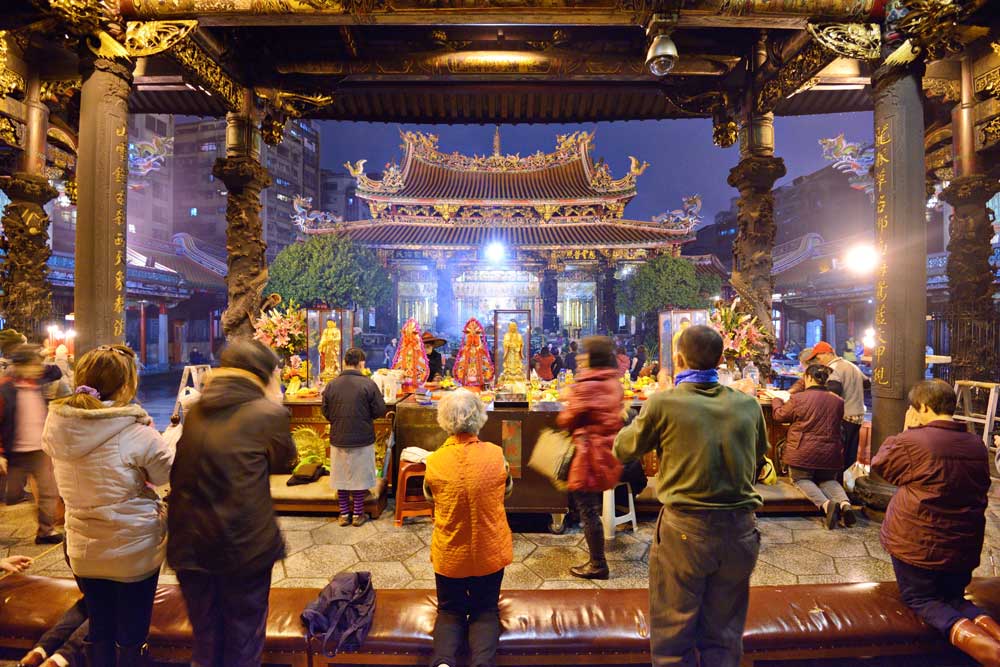
Be a part of the noble mission as a supporting member or a patron, or a volunteer contributor of content.
The power of Dharma to help sentient beings, in part, lies in ensuring access to Buddha’s precious Dharma — the mission of Buddha Weekly. We can’t do it without you!
A non-profit association since 2007, Buddha Weekly published many feature articles, videos, and, podcasts. Please consider supporting the mission to preserve and “Spread the Dharma." Your support as either a patron or a supporting member helps defray the high costs of producing quality Dharma content. Thank you! Learn more here, or become one of our super karma heroes on Patreon.
Josephine Nolan
Author | Buddha Weekly
Josephine Nolan is an editor and contributing feature writer for several online publications, including EDI Weekly and Buddha Weekly.
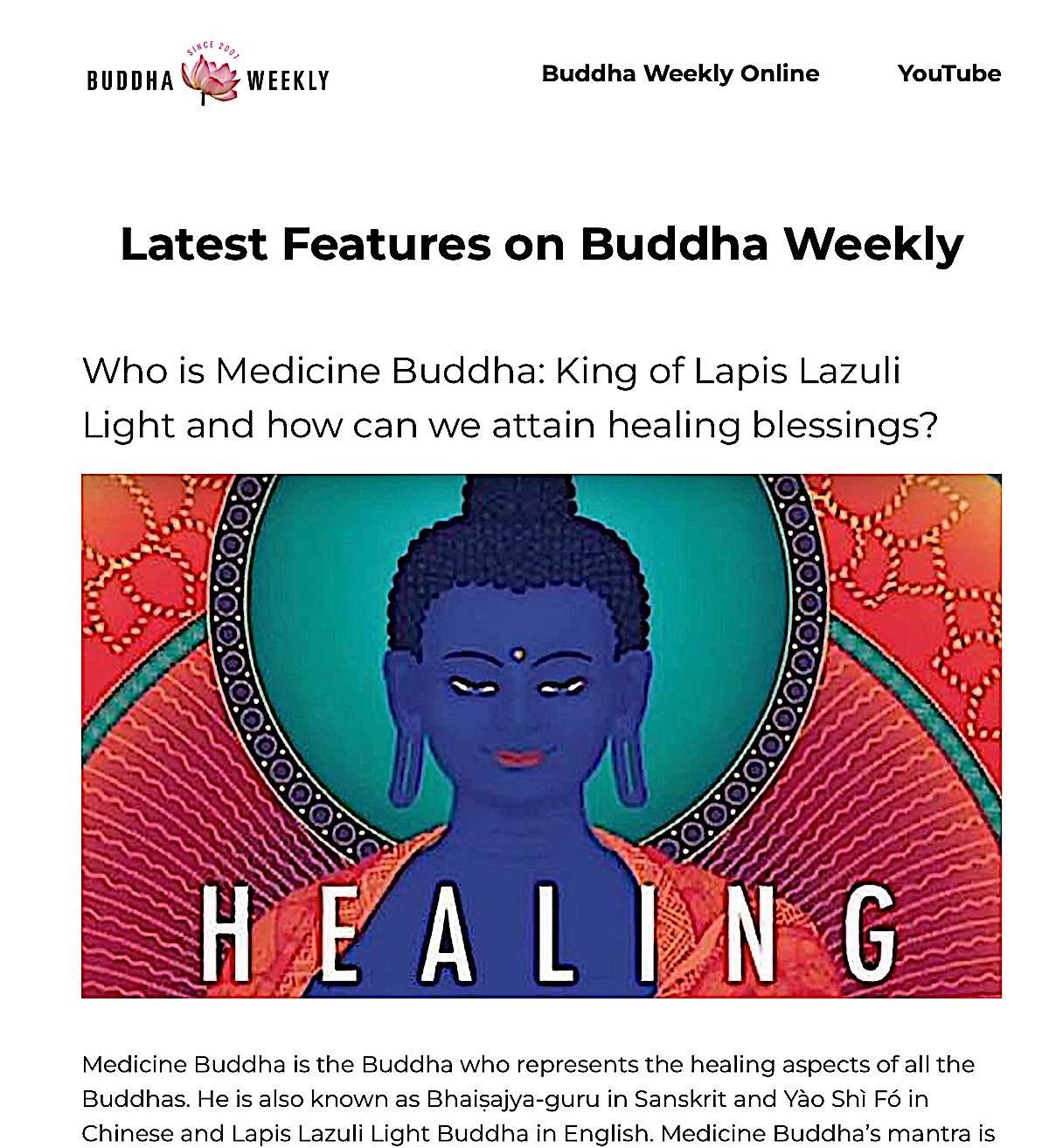
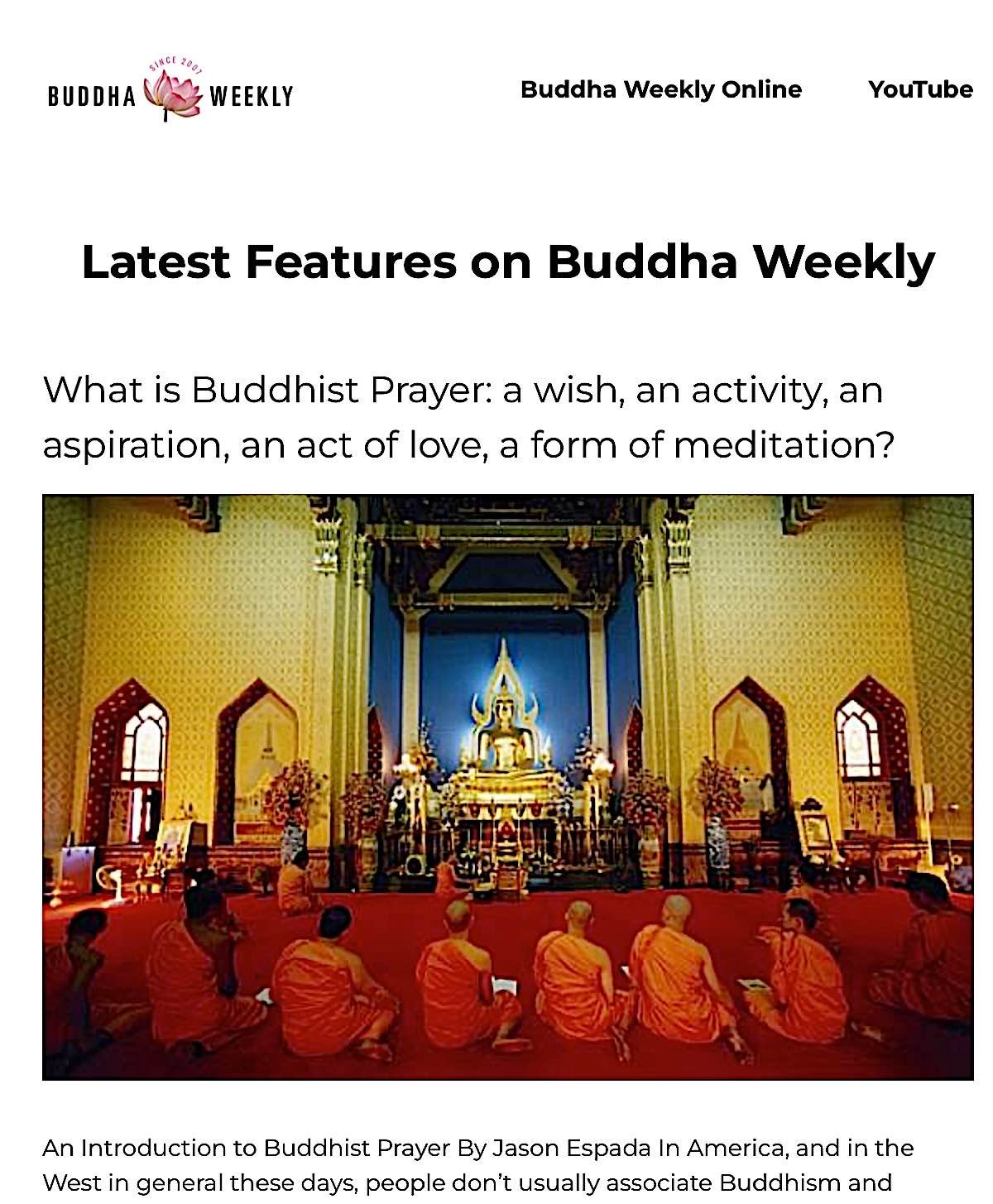


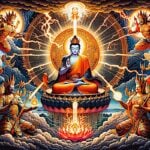

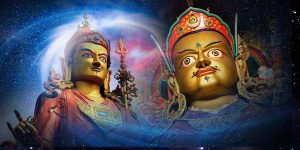
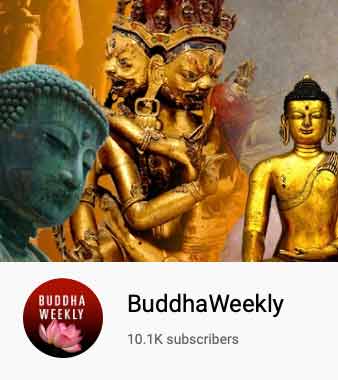


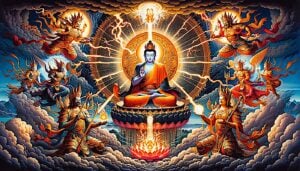
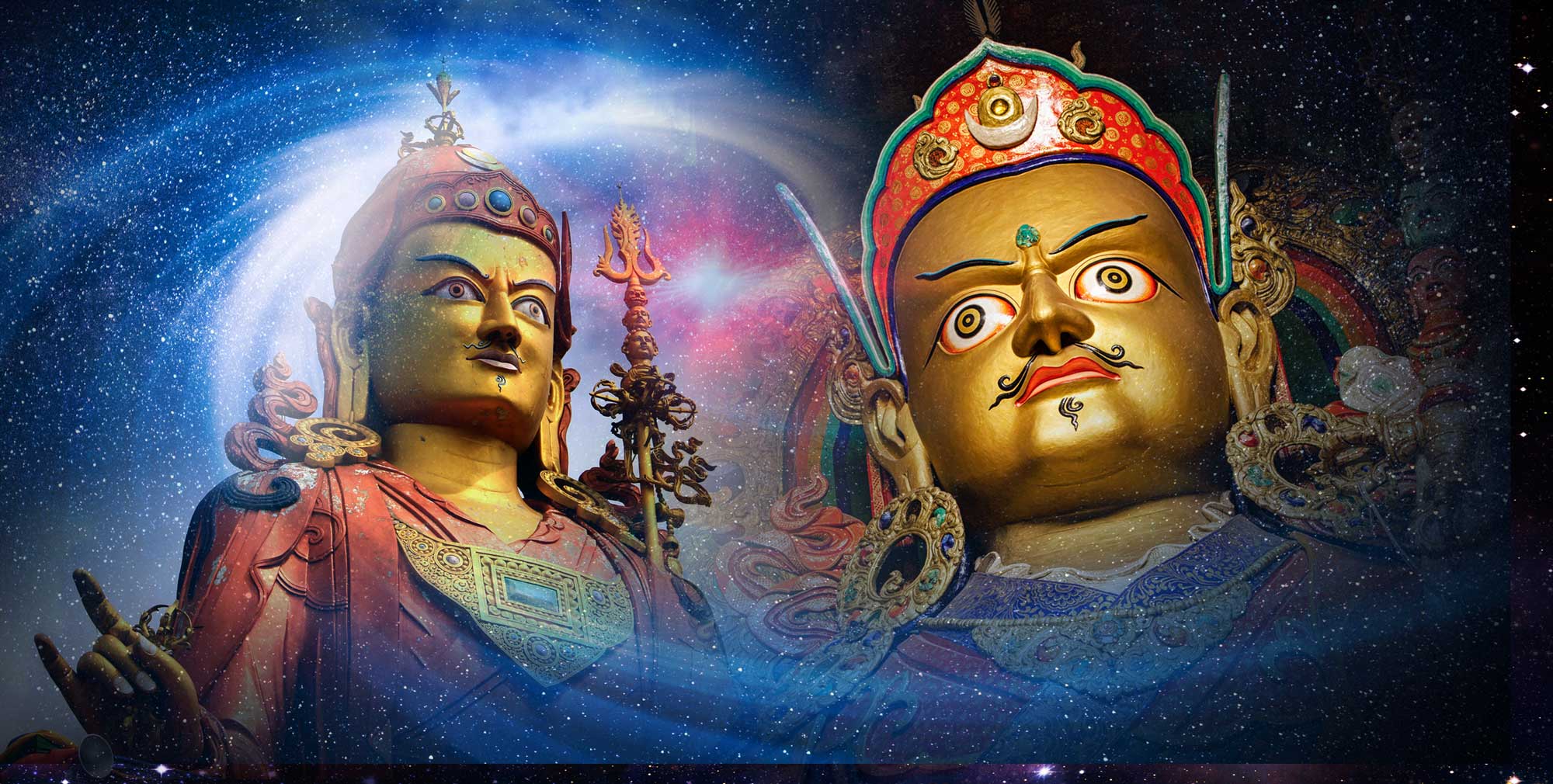


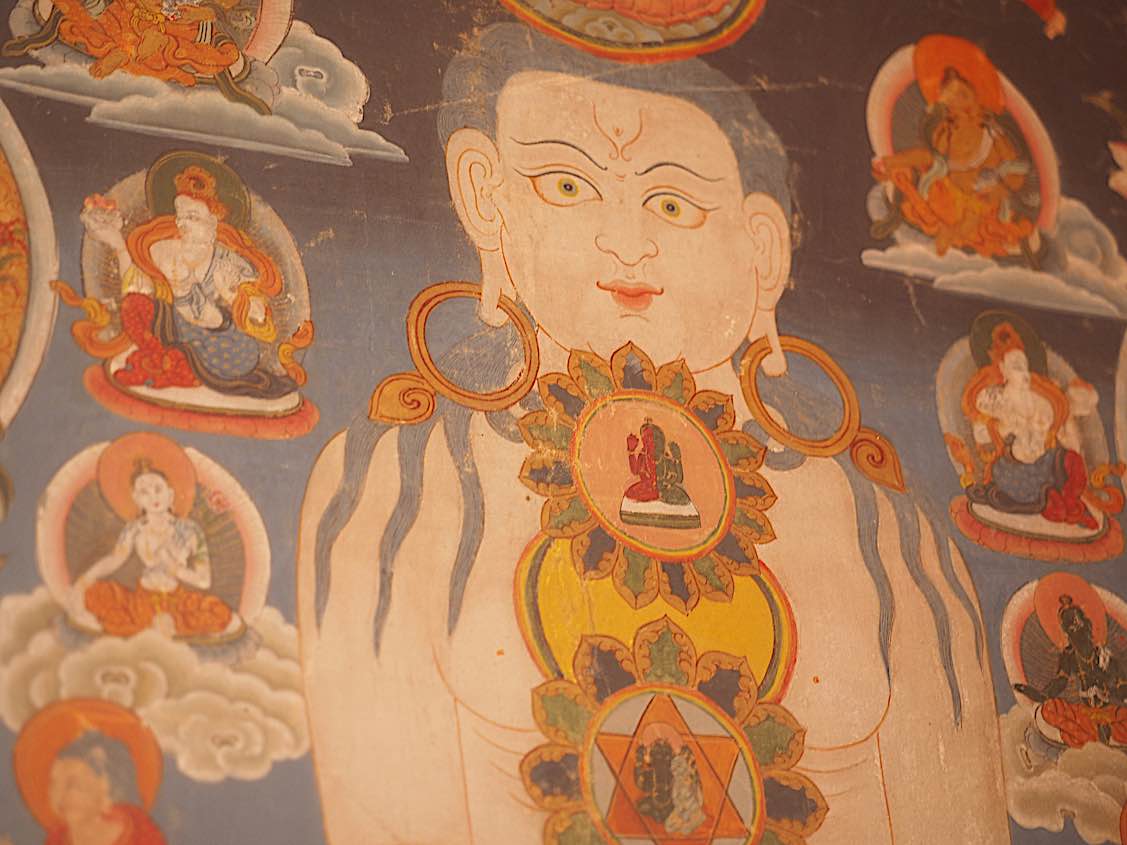
Four kinds of nutriments.. my understanding is we’re forced to eat just to sustain our lives. We need to shun off all our senses of tastes else we will keep turning in this horrifying wheel of samsara. Its somewhat like a robot we train ourselves, but when others cry we’re supposed to feel for them we’re human at that moment yet when people scold or hurt us we’re taught to shun off all our senses ..this whole thing is so confusing. Yen methods are sometimes so direct other times illogical and yet can reach enlightenment. This Killing off senses, attachment, cravings are natural tools to keeps us alive. The faculties of sensing danger tells us to run away, attachment to artistry drawing well it seems here to be a rightful desire, to me striving towards enlightenment is really³ quite impossible. It’s soooo disheartening, confusing and we sentient beings are so pitiful.
Yes, it can be confusing and it can seem overwhelming. Buddha taught the middle way — after he, himself tried the extremes (he literally studied and practised with every guru of his day). Ultimately, he found a simpler, moderate, middle way.
I’m not a teacher, only a long-term practitioner (35 years practice) and I have found that over time I have found an equilibrium. I feel compassion for all beings (I even go out of my way to not step on insects) but I also have a more measured and less stressful response to suffering. I am now able to help an injured or dying animal without panicking, thanks to practices in equanimity and compassion. Thirty years ago I might have felt even more emotional pain when I saw suffering, but it would immobilize my capacity to help.
In other words, we’re not taught to kill our senses or attachments or cravings — we’re taught to be mindful of them — and also, importantly, that all beings also have these sufferings (which is what helps arise the feeling of Universal Compassion for all beings.)
What is beautiful about Buddhism is that it encourages EQUANIMITY. This concept really helped me in my Metta and compassion practices. Also, in my practice (Vajrayana) ACTIVITY is a big part of practice. Tara, for example, exemplifies the enlightened quality of Compassionate activity. In other words, getting involved, helping people — instead of reading about suffering, crying and then getting wound up. That actually becomes practice and a wonderful one.
I think the practice of Metta is the most precious teaching (at least for my current stage of development), even more so than meditation, and I certainly don’t feel the need to “kill off senses, attachment or cravings” only to recognize them, learn to use them without extremes. But I’m not, as I said, advanced, nor will I ever be a monk:-)
For me the most precious practice are the FOUR SUBLIME STATES taught by Buddha:
Love or Loving-kindness (metta)
Compassion (karuna)
Sympathetic Joy (mudita)
Equanimity (upekkha)
It’s important to emphasize EQUANIMITY (evenness of temper, calmness, measured responses) as it is what keeps us from drowning in our compassion. After awhile, seeing all the suffering in the world, if we don’t cultivate also Equanimity, we can be too overwhelmed to act. And, as I said, I think action is a Buddhist Compassion practice — and important one. This is my favorite aspiration prayer: (THE FOUR IMMEASURABLES)
MAY ALL BEINGS HAVE HAPPINESS AND ITS CAUSES
MAY WE NEVER HAVE SUFFERING OR ITS CAUSES
MAY WE CONSTANTLY DWELL IN JOY TRANSCENDING SORROW
MAY WE DWELL IN EQUAL LOVE FOR BOTH NEAR AND FAR.
If we cultivate, especially the last one (Equanimity) and we equally have sympathy for our adversaries as much as our friends, the sense of drowning in sorrow tends to decline (at least for me.)
METTA, in kindness, Lee
Thank you so much Editor Lee Kane.Just noticed your reply. Browsed before perhaps just got through recently. I’m not to smart in hi-tech. Aware of my poor informed knowledge towards buddhism especially Tibetan Buddhism I surrender myself via the 2nd. Power to help me. Stupid, confused with a deluded mind I chose the Buddha’s Recitation name and forced myself to chant Namo Amithabha twice daily. Just hope this would be me my so-called last life in this horrifying mundane world. Let me hopefully be born in AMITHABHA BUDDHA’S LAND and cultivate there in order to be more confident to return to this extremely dangerous samsara world to help sentient beings. Only one thing that bothers me deeply is that why do some Buddha’s uses consort to practice. Chinese Mahayana buddhism as far as read takes sex as a taboo. The 5 precepts did mentioned of sexual misconduct. Of course, All BUDDHAS are more than enlightened to know this but why do some Buddhas used this method/symbol knowing that deluded people like me will bound to be confused. Now I fear I not only am unable to enter the West Land but being thrown directly into the burning hell for kalpas because I ignorantly question about consort practice. Actually Lee this is my second retyped email, my first one to you was snapped – off line…it was a much longer email with details of my stupidity and citing of Buddha’s name using consorts, it just went off and I lost my original words and email. Perhaps even BUDDHAS got mad with me, anyway I guess I’ve bored you down too. What ever, I dare not force myself to understand the complexity of choosing the right dieties, tantras and the likes. Least I go cuckoo coz I’m not clever. In this mundane world, to cultivate wisdom is to practice selflessness and its running at a loss in arithmatics. It takes an extremely wise entity to be able to juggle affairs superbly well. So this dull and deluded me plants a futile hope in using the simplest method of chanting Amithabha Buddha’s name hoping to get HIS sympathy. (i read in some sutras theres no genders up at BUDDHAS stage) But here on earth gender plays supremacy especially in one Chinese Mahayana Buddhism book written in English that there can never be a female Buddha. On the other hand I did come across Tibetan Buddhism that mentions of Female Buddhas called Dakinis if I’m not wrong. Guess I’d better not bore you down with my stupidity. Lastly may you obtained complete Buddhahood soonest. Thank you.
Dear Teng, I admire your dedication and your devotion to Buddha, Dharma and Sangha. The important thing to remember is that Buddhism is NOT about rigid dogma or rules, nor is there any reason to fear hell for questioning consort practice. Shakyamuni Buddha invited us to question, challenge and use logic in our practice. Amitabha Buddha is the most compassionate and forgiving Buddha, so please keep up your great practice and you will attain your goal.
Regarding consort practice, it’s not about sex, and that’s where people get confused. Tibetan Buddhism is all about symbolism and visual metaphors. The consort image is meant to symbolize the union of COMPASSION (Buddha) and WISDOM realizing emptiness (Consort). In different cultures sex might not be a good metaphor (for instance, you mentioned Chinese Mahayana) but in Tibet, sex is just sex, nothing out of the ordinary, a great symbol of union of two concepts. Female is normally associated with Wisdom in Buddhism.
In other words, you could contemplate the male Buddha and the female Buddha as separate images/statues/tangkhas on your altar and in your mind’s visualization, and this would be fine. But for Tantric Buddhism, imagining them united gets across that important idea that both Wisdom and Compassion are needed.
Also its important to know that Tibetan monks DO renounce sex (but not lay practioners). Just because the image is union doesn’t mean monks practice union. There are lamas who are monks and some who are not, but if they are monks, they practice celibacy like any monk. It isn’t about practicing sex, it’s about understanding the symbolism of the union of Compassion and Wisdom.
(Similarly, WRATHFUL or ANGRY Buddhas are not meant to express that Buddhism is about being angry. The wrathful Buddha is a symbol of the sheer, awesome, irresistable power of the Enlightened Mind. Wrathful deities is a huge topic, just trying to illustrate that it’s all symbolism)
That’s the bottom line– symbolism and metaphor (visual mind language instead of words). And, there is no harm in you asking, wondering or even not liking the images. It isn’t negative karmically to simply ask questions or to not understand. (These images weren’t meant to be public. In the old days they were only shown to those who understood them, more senior Lamas and students. Now, with the internet, these images are shared everywhere, so we have to start explaining the symbolism.)
I think, at the end of the day, we all just focus on our vision of Buddha within our comfort levels. Some people prefer visual metaphor (Tantra), some prefer verbal power (chanting the praises), some prefer strictly mental pursuits (mindfulnes), and some are open to all and more. Ultimately, we all journey the path in the way we are comfortable.
Many good wishes on your journey. May all beings by happy and free from suffering! Metta, Lee Kane.
Namo Amithabha Buddha, good morning Mr. Lee Kane, am grateful and touched by your quick reply. You lifted my spirits and confidence. Indeed you have enlightened me before regards consorts/symbols/very fierce looking Dieties Bodhisattvas, just that my wish is that majority of sentient beings (me the most) which is already confused be not made more puzzle over these images. Likewise Syakyamuni Buddha did rejected women to be nuns, it took Ananda to help gotten the permission from Buddha Syakyamuni to enable their entry into the Sangha. In was saddening when I read that when young coz the Great Buddha Syakyamuni processes the ability to look into very lengthy periods of past and future lives of sentient begins, why was he reluctant.. and this gesture itself causes the much negative perceptions of women till the so call modern societies of today. How even certain monk wrote evil characteristics of female and how India and most Asian countries viewed women, and the latest death of a woman in China due to continuous abortion coz the husband insisted a boy child. Buddhism to me is the most revered teachings and yet this most vital yin entities were off balance in terms of almost everything. Already yin and yang was emphasize in Taoism, even consorts to symbolised true reunion of compassion not the passion sex which often pollutes normal mankind. I not feminist, just that perhaps I’ve been entangled in this terrible samsara wheel for soooo long that its near impossible for me to awaken to emptiness of worldly Justice etc. Latest example, I may sound petty but when I read back your reply pertaining to 4 food nutrients, I notice that the date your good self posted was actually on the same day I sent my comments, but I did ran through to a day or two after that to check. It wasn’t there, so I took it as myself not smart in hi-tech searched the wrong place. It’s not fault finding here but to know and understand is all about here. Just like I’m not accusing Buddha Syakyamuni of neglecting women just dun understand how such an important worldly developments could be overlooked or taken so lightly by the know all Buddha. Frankly Mr.Lee I did not develope so deep a love or respect to Buddha Syakyamuni YET it was Buddha Syakyamuni who showed the way to the much easier way to escape this horrifying wheel of suffering by encouraging and mentioning Amithabha Buddha’s great compassion 48 vows to ease our no way out from continuous torture. Mr. Lee you are also a great Bodhisattva and a very busy man too, it must have cost your precious time to reply me so early in the morning. I deeply appreciate your metta. I will TRY not to bother you with my stupidity.., as being an Editor is no easy job. I will continue to recite Namo Amithabha Buddha’s name and stick to that and not attempt other new puzzling methods as I’m not young nor have the time to learn all over again. Lastly I pray you successfully attained the highest level of Buddhahood ASAP. Amithourfor.
Dear Teng,
May your practice of Namo Amitabha plant the seeds in your heart and mindstream for full enlightenment for the benefit of all sentient beings.
Of course, in sutra, Shakyamuni proclaimed the practice of Namo Amitabha. This is from sutra:
“If there are good men or good women who hear of Amitabha Buddha, and recite his name single mindedly and without confusion, for one day or two days or three days or four days or five days or six days or seven days, then when these people are about to die, Amitabha Buddha and all the sages who are with him will appear before them. When these people die, their minds will not fall into delusion, and they will attain rebirth in Amitabha Buddha’s Land of Ultimate Bliss. I have seen this benefit, and so I speak these words. If sentient beings hear what I say, they must make a vow to be born in that land.” — Shakyamuni Buddha in the Amitabha Sutra.
I don’t know if you’ve seen our previous feature story on Amitabha practice? If not, here’s the link:
https://buddhaweekly.com/amitabha-sutra-cutting-delusions-one-pointed-blissful-contemplation-amitabha-buddha-pure-land/
May all beings be happy and free from suffering. In kindness, Metta, Lee
Hi again Teng,
I wanted also to reply regarding women in Buddhism. I think that’s largely misrepresented online. Shakyamuni Buddha was literally the first teacher of a mainstream path to embrace women as equals spiritually. This is from our recent feature on the Divine Feminine:
Shakyamuni Buddha “was the first religious Teacher who gave religious freedom to women,” writes Venerable K. Shri Dhammananda Maha Thera. “Before the Buddha… women were not even allowed to enter any temple or recite any religious scripture.”
Shakyamauni Buddha was also born as a woman many times in past lives according to the Jakarta Tales. Venerable Thera writes: “The Buddha Himself was born as a woman on several occasions during His previous births in Samsara.”
“I disagree with blaming sexism on Tibetan Buddhism,” said well-known teacher Sangye Khandro. “During my years among Tibetans, I have not been disadvantaged on account of being female — just the opposite. From the very beginning, I was given every opportunity to learn, sometimes even more so than men!”
The full story, by the way is here:
https://buddhaweekly.com/female-enlightened-manifestations-female-teachers-lamas-wisdom-action-reader-poll-interview-lama-shannon-young/
Much kindness and Metta, Lee
Thanks so much for your reply. Preference for gender entry into monastic lives during Sakyamuni Buddha’s time was not read on line. It was perhaps from Buddhist Books. At that time I was too young to differentiate between Therevada and Mahayana Vehicles. But I started off with Therevada even came across how Buddha Shakyamuni admonished Arahant achievers saying they don’t save sentient beings but only focus on their own liberation . Thats how I slowly notice Mahayana and the great Avalokithesvara. Yes indeed I did read of Buddha’s hesitation in permitting women as nuns. He allowed only after Ananda voice for the ladies. I read too about Buddha Shakyamuni sacrificing his lifetime celibacy practice to a maiden who Immediately fell in love with the serene clear skinned looking Buddha and insisted to be married to him else she’ll take her own life. The Bodhisattva having explained his celibacy cultivation walk away but after the seventh step turned back coz he knew the maiden would really end her life for the refusal. So it puzzles me alot coz learners dull like me takes word to word what is being written or said. It’s alright I believe one day I will meet the answer to my puzzlement. May all sentient beings be happy free from fear sorrow and gain complete Buddhahood soonest. Amithourfor .
Thanks Teng, I think most of us are lay practitioners, but we all have different cultural backgrounds, which impact how we view the Dharma teachings. Monastic rules are different from lay people, and, of course, Shakyamuni was a monk. I really feel there are no contradictions if you contemplate the sutras in context. It’s important to know that because Shakyamuni was a fully enlightened Buddha he taught skillfully to match OUR capabilities (and limitations), as students, and this is why you find different styles of teachings suited to different minds. Basically, “skilful means” — as it has been described. He might teach differently to an audience or merchants, than he would do a group of monastics, and different again to an audience of kings and nobles. I find it best to focus on the teachings that align with (and motivate) our own mindstreams. For me, that wouldn’t be monastic rules, for example.
Many of the teachings also had multiple meanings. Again, skilful means. Since the context is thousands of years old (by that I mean he taught 2500 or more years ago) it’s important to be guided by a modern teacher who can bring the teachings into meaningful synch with our lives as they are today. I find no errors or doubts in the Sutras because I embrace them as skilful teachings taught for people with different propensities. Anyway, I hope our discussion has been of some small benefit:-) Metta, Lee
Agree… different groups of people needs different expediency for clearer perceptions. Perhaps I mistakenly joined the wrong audience.ha ha gotta learn to relax abit over this religion cultivation matter least ended up overly serious stiff and dull and gloomy. Ha i shouldn’t steal your resting hours any longer. Truly appreciate all your guidance and kind response. May you be healthy, happy, long-lived and obtained Liberty from this samsara. May all sentient beings awaken to enlightenment soon. Good night Sir and thank you so much. Sadhu³.